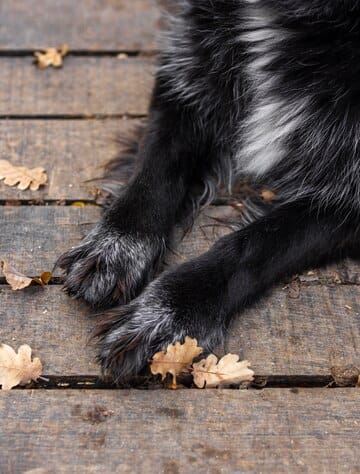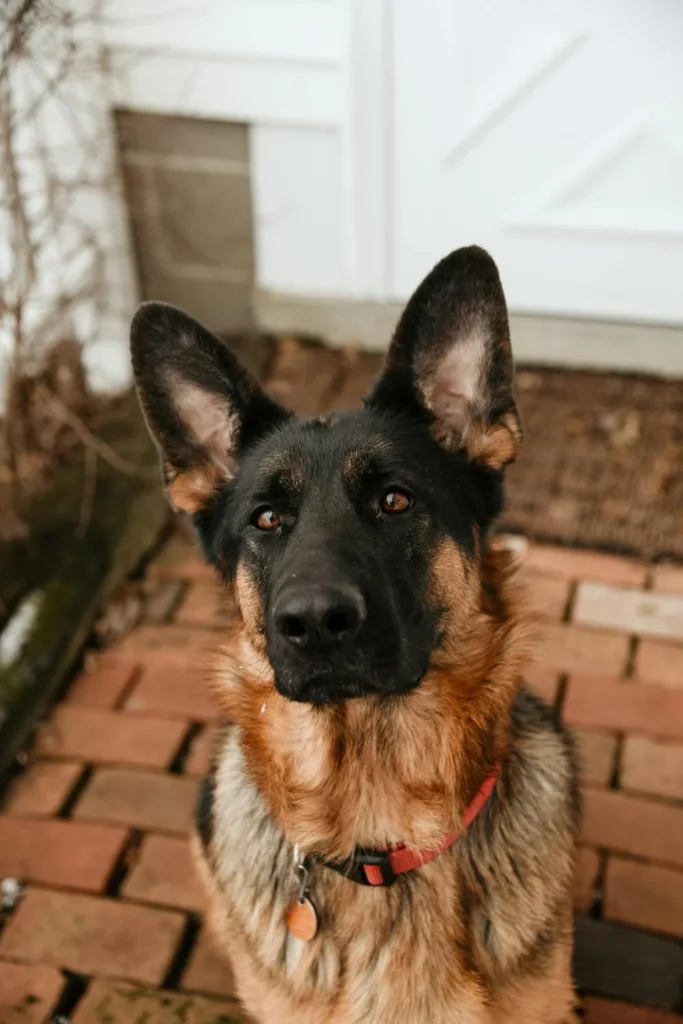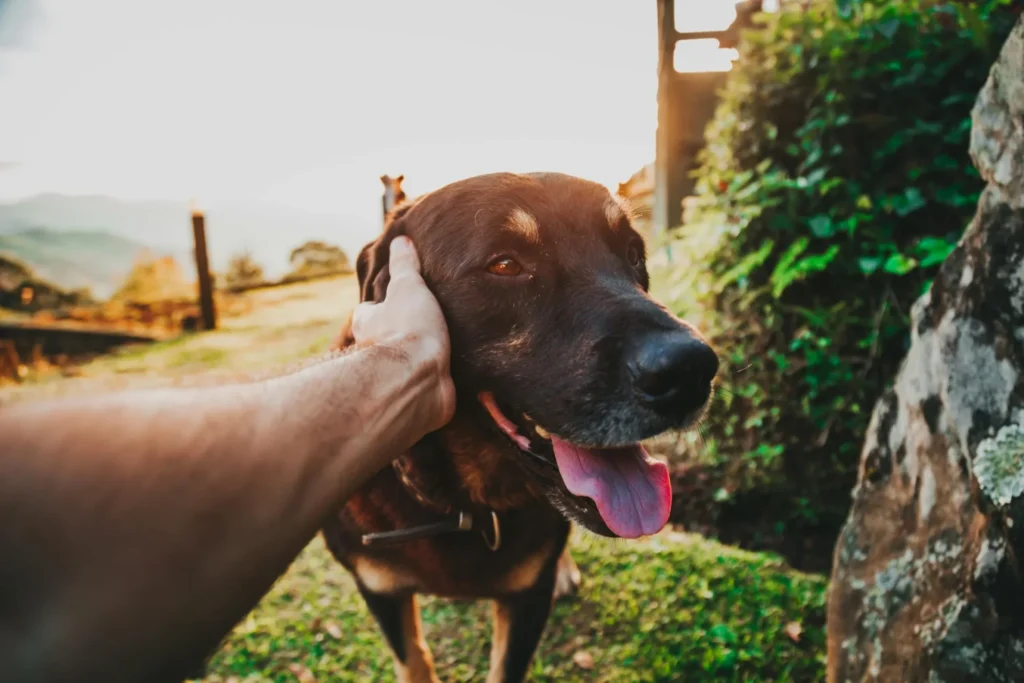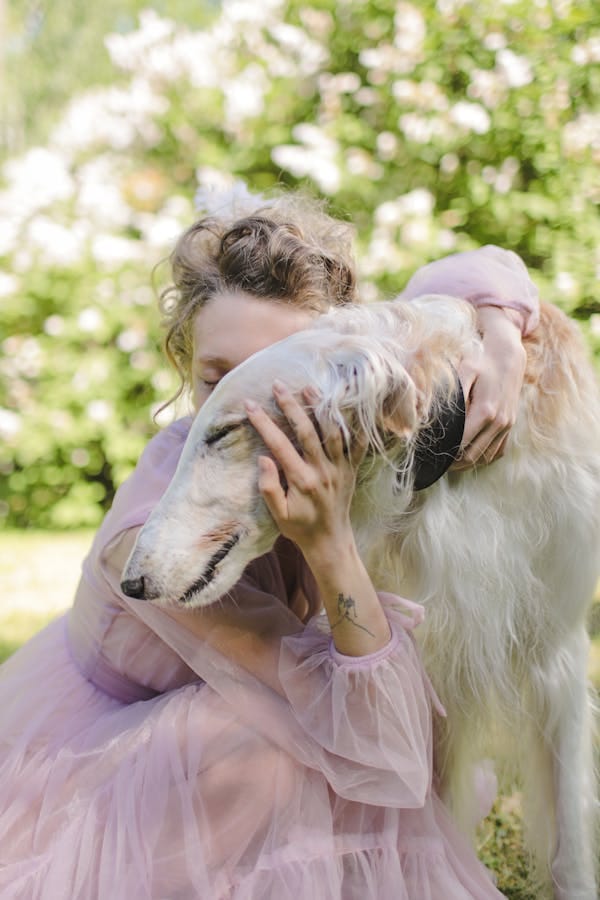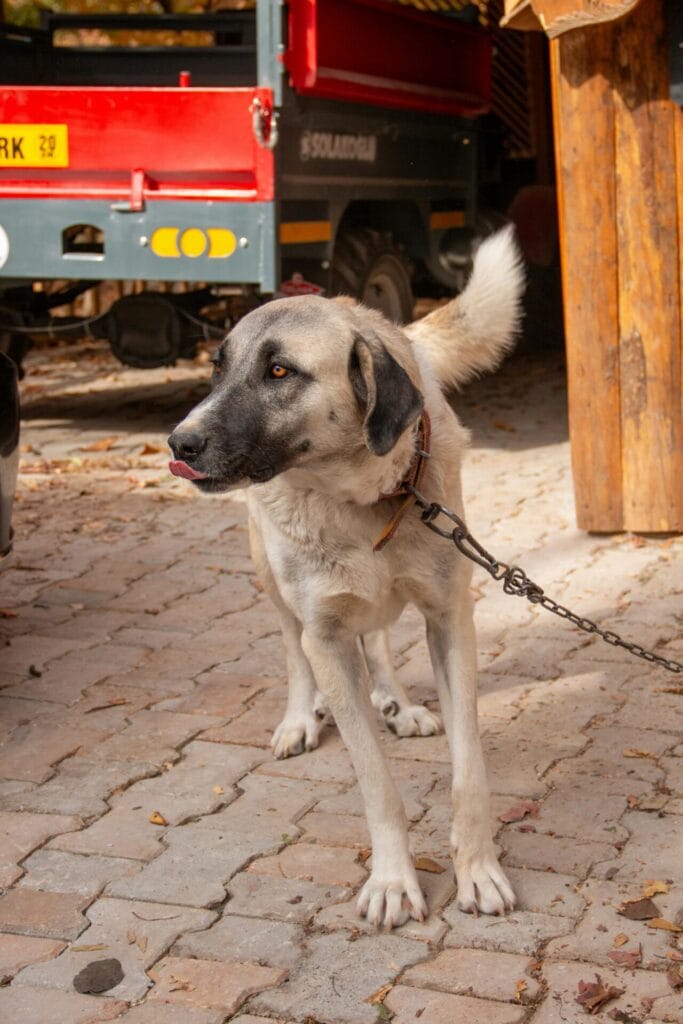- Introduction
- Understanding Fleas and Their Impact on Poodles
- How Do Poodles Get Fleas?
- Signs Your Poodle Has Fleas
- Preventing Flea Infestations in Poodles
- Treating Flea Infestations in Poodles
- Comparison of Flea Treatment Options for Poodles
- Natural and Homemade Flea Remedies for Poodles
- Dealing with Severe Flea Bite Reactions in Poodles
- Conclusion: Keeping Your Poodle Flea-Free and Happy
- Frequently Asked Questions
Introduction
As a poodle owner, one of the most common concerns is dealing with pesky fleas. These tiny parasites can quickly turn into a major problem, causing discomfort and irritation for your furry friend. But can poodles actually get fleas? The short answer is yes, unfortunately, poodles are just as susceptible to flea infestations as any other breed of dog.
In this ultimate guide, we’ll dive deep into the world of poodle flea problems, exploring everything from how poodles get fleas to effective prevention methods and treatment options. Get ready to equip yourself with the knowledge and tools necessary to keep your poodle flea-free and happy.
Understanding Fleas and Their Impact on Poodles
What Are Fleas?
Fleas are tiny, wingless parasites that feed on the blood of warm-blooded animals, including dogs like poodles. These pests are experts at jumping and can easily move from host to host, making them a persistent problem for pet owners.
Flea Anatomy and Life Cycle
Adult fleas are reddish-brown in color and typically measure between 1/16 to 1/8 inch in length. They have a laterally compressed body shape, allowing them to move easily through the hair or fur of their hosts.
The flea life cycle consists of four stages: egg, larva, pupa, and adult. Understanding this cycle is crucial for effective flea control.
- Eggs: Adult female fleas lay tiny, white eggs that can easily fall off the host into carpets, bedding, or other areas where the host rests.
- Larvae: The eggs hatch into worm-like larvae that feed on organic matter, including flea dirt (feces from adult fleas).
- Pupae: The larvae spin cocoons and develop into pupae, which can remain dormant for months until conditions are favorable for emerging as adults.
- Adults: Adult fleas emerge from the pupae and immediately seek a host to feed on.
This life cycle can continue indefinitely if not properly controlled, leading to heavy infestations.
The Impact of Fleas on Poodles
Flea infestations can have a significant impact on your poodle’s health and well-being. Here are some common issues caused by fleas:

- Skin irritation and discomfort: Flea bites can cause intense itching, leading to excessive scratching, hair loss, and the development of hot spots or secondary skin infections.
- Flea allergy dermatitis: Some dogs, including poodles, can develop an allergic reaction to flea saliva, resulting in severe skin inflammation, hair loss, and intense itching.
- Anemia: In cases of heavy infestations, especially in puppies or older dogs, the excessive blood loss caused by fleas can lead to anemia and other health problems.
- Tapeworm infestations: Fleas can transmit tapeworms to dogs when ingested during grooming or chewing.
Addressing flea infestations promptly is crucial to maintaining your poodle’s comfort, health, and overall well-being.
How Do Poodles Get Fleas?
Fleas are expert hitchhikers, and they can find their way onto your poodle’s coat through various means. Here are some common ways poodles can pick up these unwanted guests:
- Direct contact with infested animals: If your poodle comes into close contact with another pet that has fleas, those fleas can easily jump ship and infest your pooch.
- Outdoors exposure: Fleas thrive in warm, humid environments, and they can be found in grassy areas, gardens, and even your own backyard. If your poodle spends time outdoors, they’re at risk of picking up fleas.
- Indoor infestations: Believe it or not, fleas can also find their way into your home through cracks, open windows, or even on your clothing or shoes. Once inside, they can happily set up shop in carpets, furniture, and, of course, on your poodle.
- Kennels or groomers: If you board your poodle or take them to a groomer, there’s a chance they could come into contact with fleas from other infested animals or environments.
No matter how pristine your home or well-groomed your poodle, fleas can still find their way in. But don’t worry, we’ve got your back with proven strategies to prevent and treat flea infestations.
Signs Your Poodle Has Fleas
Knowing the signs of a flea infestation is crucial for catching the problem early and preventing it from escalating. Here are some common indicators that your poodle might have fleas:
- Excessive scratching, licking, or biting their skin: This is often one of the first signs that your poodle is dealing with fleas, as the bites can cause intense itching and irritation.
- Visible fleas or flea dirt: Carefully inspect your poodle’s coat for any signs of actual fleas or tiny black specks (flea dirt) that resemble black pepper. These are sure signs of an infestation.
- Scabs or hot spots: If left untreated, flea bites can lead to scabs, red patches, and hot spots on your poodle’s skin, which can become infected.
- Hair loss or thinning coat: In severe cases, excessive scratching and biting due to flea bites can cause hair loss or a thinning coat.
If you notice any of these signs, it’s crucial to take action immediately to address the flea problem and provide relief for your poodle.
Preventing Flea Infestations in Poodles
Prevention is key when it comes to keeping fleas at bay. Here are some effective strategies to help protect your poodle from these pesky parasites:
1. Regular Grooming and Bathing
Poodles require frequent grooming, which can help remove any fleas, eggs, or flea dirt that may be present in their coat. Additionally, bathing your poodle with a flea-killing shampoo can help eliminate existing fleas and prevent new ones from taking hold.
2. Flea Preventatives
Many monthly flea and tick preventatives are available in various formulations, including topical treatments, oral medications, or collars. These products not only kill adult fleas but also help prevent future infestations by disrupting the flea life cycle.
3. Vacuum Frequently
Vacuuming carpets, furniture, and other areas where your poodle spends time can help remove flea eggs, larvae, and adult fleas, reducing the risk of infestation. Be sure to dispose of the vacuum bag or canister contents immediately after vacuuming to prevent reinfestation.
4. Treat Your Home and Yard
If you suspect a flea infestation, it’s essential to treat not only your poodle but also your home and outdoor areas. Consider using insecticide sprays, powders, or foggers specifically designed for flea control.
5. Keep Your Poodle’s Area Clean
Regularly wash your poodle’s bedding, toys, and any other items they come into contact with to eliminate potential flea hiding spots.
6. Monitor for Signs of Flea Infestations
Regularly inspect your poodle’s coat and skin for any signs of fleas, such as excessive scratching, flea dirt, or visible fleas. Catching an infestation early makes it easier to treat and prevent it from escalating.
Treating Flea Infestations in Poodles
If your poodle has already fallen victim to a flea infestation, don’t panic. There are several effective treatment options available:
1. Flea Shampoos and Dips
These medicated products are designed to kill adult fleas on your poodle’s coat and provide temporary relief from itching and irritation. However, they may require frequent reapplication and should be used in conjunction with other treatment methods.
2. Oral and Topical Flea Treatments
Your veterinarian can recommend safe and effective oral or topical flea medications that not only kill adult fleas but also disrupt the flea life cycle, preventing future infestations. These treatments typically provide long-lasting protection and can be used in combination with other methods.
3. Flea Combs and Vacuuming
Regularly combing your poodle with a fine-toothed flea comb and vacuuming their bedding and surrounding areas can help remove adult fleas, eggs, and larvae. This should be done in conjunction with other treatment methods for maximum effectiveness.
4. Home and Yard Treatment
Treating your home and outdoor areas with insecticides or other flea control products is crucial for eliminating the entire flea population and preventing reinfestation. Follow product instructions carefully and take necessary precautions to ensure safety.
5. Flea Collars
Flea collars can provide continuous protection against fleas by releasing insecticides that kill and repel fleas and ticks. However, they may be less effective in heavy infestations and should be used in combination with other treatments.
6. Natural or Homemade Remedies
For those seeking more natural alternatives, options like diatomaceous earth, nematodes, essential oils, apple cider vinegar, and brewer’s yeast and garlic supplements may provide some relief. However, it’s important to consult with your veterinarian before using these methods, as they may have limitations or potential side effects.
Comparison of Flea Treatment Options for Poodles
When it comes to treating flea infestations in poodles, there are various options available. Here’s a table comparing some of the most common flea treatment methods:
| Treatment Option | Pros | Cons |
|---|---|---|
| Flea Shampoos and Dips | – Provides temporary relief from itching and discomfort – Kills adult fleas on contact | – Short-term effectiveness – Requires frequent reapplication |
| Oral Flea Medications | – Effective at killing adult fleas – Disrupts flea life cycle – Long-lasting protection | – May have side effects in some dogs – Requires a prescription |
| Topical Flea Treatments | – Convenient spot-on application – Kills adult fleas and disrupts life cycle – Long-lasting protection | – Potential for skin irritation – May be less effective in heavy infestations |
| Flea Collars | – Continuous protection – Repels and kills fleas and ticks | – Limited effectiveness in heavy infestations – May cause skin irritation |
| Home and Yard Treatments | – Targets fleas in all life stages – Helps prevent reinfestation | – Requires thorough application – Potential for chemical exposure |
It’s important to consult with your veterinarian to determine the most appropriate and safe flea treatment option for your poodle, considering their age, health condition, and the severity of the infestation.
Natural and Homemade Flea Remedies for Poodles
For those seeking more natural or homemade alternatives, here are some options to consider:
| Natural Remedy | How it Works | Considerations |
|---|---|---|
| Diatomaceous Earth | Made from fossilized algae, it damages the exoskeleton of fleas, causing dehydration and death. | Safe for pets and humans, but can be drying if inhaled. Apply to bedding and carpets. |
| Nematodes | Beneficial microscopic worms that feed on flea larvae and eggs in the environment. | Safe for pets and humans, but requires specific application and environmental conditions. |
| Essential Oils (e.g., lemongrass, peppermint, lavender) | Repels and deters fleas due to their strong scents. | Dilute properly and avoid direct application to sensitive areas. Some oils may cause skin irritation. |
| Apple Cider Vinegar | Helps repel fleas and makes the skin less appealing to them. | Dilute with water and use as a rinse or spray. Avoid getting in eyes. |
| Brewer’s Yeast and Garlic | When ingested, can make a dog’s blood less appealing to fleas. | May cause digestive upset or other side effects in some dogs. |
While natural remedies may provide some relief, it’s essential to consult with your veterinarian before using them, especially if your poodle has any underlying health conditions or is pregnant/nursing.
Dealing with Severe Flea Bite Reactions in Poodles
While fleas are a nuisance for any dog, some poodles may develop more severe reactions to flea bites, such as:
- Flea allergy dermatitis: This is an allergic reaction to flea saliva, which can cause intense itching, hair loss, scabs, and hot spots.
- Anemia: In cases of severe infestations, excessive blood loss from flea bites can lead to anemia, especially in puppies or older dogs.
If your poodle is experiencing significant discomfort or concerning reactions to flea bites, it’s crucial to seek veterinary attention immediately. Your vet may recommend additional treatments, such as antihistamines, corticosteroids, or antibiotics, to manage the symptoms and prevent further complications.
Conclusion: Keeping Your Poodle Flea-Free and Happy
Dealing with flea infestations can be a frustrating and time-consuming process, but by following the prevention and treatment strategies outlined in this guide, you can help keep your poodle flea-free and happy.
Remember, consistency and diligence are key when it comes to flea control. Regular grooming, vacuuming, and treating your home and outdoor areas are essential for maintaining a flea-free environment for your furry friend.
Don’t hesitate to seek professional help from your veterinarian if you suspect a flea infestation or if your poodle is experiencing severe reactions or discomfort. With the right approach and a little patience, you can bid farewell to those pesky fleas and enjoy many happy, itch-free moments with your beloved poodle.
Frequently Asked Questions
1. Are certain poodle varieties more prone to flea infestations?
While all poodle varieties can be susceptible to fleas, those with longer, thicker coats (such as Standard Poodles) may be at a higher risk of harboring fleas and their eggs. Proper grooming and preventative measures are essential for all poodle varieties.
2. Can poodles get fleas from other pets in the household?
Yes, fleas can easily spread from one pet to another within the same household. If you have multiple pets, it’s important to treat all of them for fleas simultaneously to prevent reinfestation.
3. How long does it take to get rid of a flea infestation in poodles?
The time it takes to eliminate a flea infestation can vary, but with consistent treatment and thorough home and yard treatments, most infestations can be resolved within 4-6 weeks.
4. Can flea infestations harm my poodle’s health?
Yes, severe flea infestations can lead to various health issues, such as anemia, skin infections, and even tapeworm infestations. It’s important to address flea problems promptly to prevent any long-term consequences.
5. How can I tell if my poodle’s flea treatment is working?
If the flea treatment is effective, you should notice a gradual reduction in the number of adult fleas and flea dirt on your poodle’s coat. Additionally, scratching and biting behavior should subside as well.





